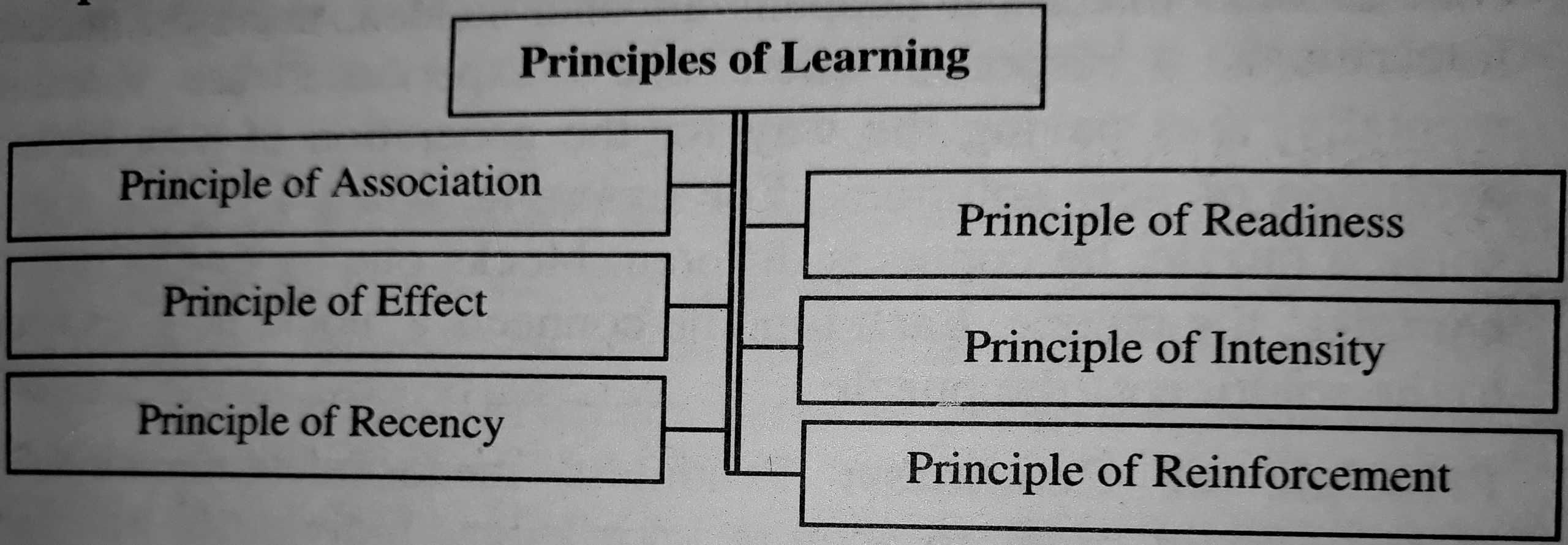Principles of learning are as follows:
Principle of Association
The process in which the pairing of two observations occurs (e.g., “dozen” and “twelve”) is called association. This results in the arousal of thoughts, i.e., if one thinks about one, the other comes to mind simultaneously.
Many principles leave a considerable impact on the learning of associations:
Contiguity
There are some objects that are learned together. Such objects tend to have a relation between them.
For example, if a graphic comprises a diagram that is accompanied by text, then the text should remind the associated diagram.
Law of Effect
This law illustrates that there is a tendency for repetition of action when a delightful result follows it.
For example, a Commissioner appreciates the sub-inspector for the manner in which he handled a difficult arrest of a criminal.
As a result, the inspector links the praise with the arrest method, and he is likely to use the same method again in the future.
Practice
The stability of the association eventually increases with the redundancy of events.
For example, when an individual climbs a hill again and again, the frequency of the repetition will make an individual expert in climbing.
But there is no assurance that practice alone can contribute to the stability of the association.
However, if some reward is associated with it, the reaction arising out of practice becomes more effective, and there is a tendency for its continuation in the future.
A group of researchers called Gestalt psychologists came out with an alternate view with regard to the association view of learning.
Gestalt researchers stated that learning could not be forced by applying the trial-and-error methods or by a combination of information and conclusions.
Instead, it happens all of a sudden through intuition. Intuition is a response where one’s experiences are visualized mentally, thus paving the way for the generation of new ideas or the evolution of new solutions.
For example, when a person tries to solve a puzzle, he connects different blocks one by one in order to complete the puzzle. Each time he connects a block, he goes nearer to the solution of the puzzle.
Principle of Readiness
Readiness means determination and enthusiasm in order to acquire knowledge. Individuals who apply an enthusiastic approach towards learning can learn in the best way, and if they lack a desire for learning, they cannot learn properly.
An instructor’s prime responsibility is to make the individual ready for learning. If an individual possesses a definite aim for learning something, then sooner or later, he excels in it.
However, if a person is devoid of strong motivation to learn something, he may not succeed.
Principle of Effect
The emotional response of the learner defines the principle of effect. This principle advocates that learning is stronger when supported by positive emotions, and it is weaker when supported by negative emotions.
A learner feels demoralized on experiencing feelings of failure, frustration, anger, confusion, or ineffectiveness.
For example, if a person joins an airplane training course, the trainer initially must focus on training about how to fly the plane.
If the trainer teaches how to land the plane on the first day of training, the trainee might become horrified and disturbed.
Principle of Intensity
A learning exposure that is realistic, effective, or pleasurable helps in the enrichment of teaching, unlike an experience that is usually routine or unexciting, ty.
According to the principle of intensity, the learner grasps more from the realistic experience rather than experiencing the poor I substitutions.
For example, the learner who only focuses on reading books to learn how to fly a plane will not gain much knowledge as it requires practical learning.
Principle of Recency
According to this principle, the things that are learned recently are more likely to be recalled by the learner.
If a learner is acquiring new facts and is far away from old facts for a long time, then it is the tendency to forget those old facts if not reviewed recently.
For example, it is easier to remember what happened yesterday, but it is difficult to remember what happened a month ago or a year ago.
Principle of Reinforcement
Reinforcement is a technique that not only helps in the stability of reaction but also has a tendency to activate the redundancy of behaviour that has happened before.
However, there is a difference between positive reinforcement and negative reinforcement.
